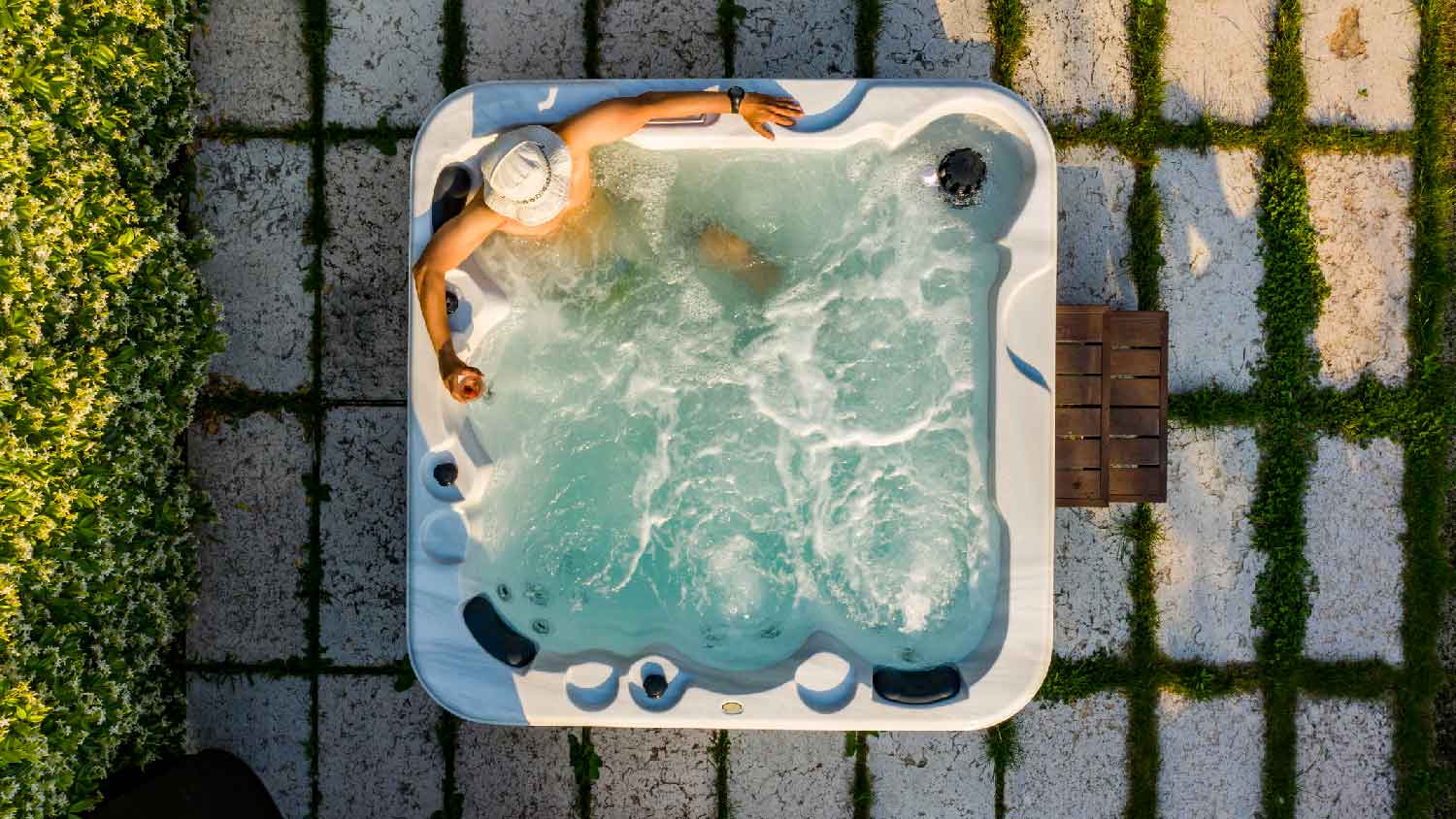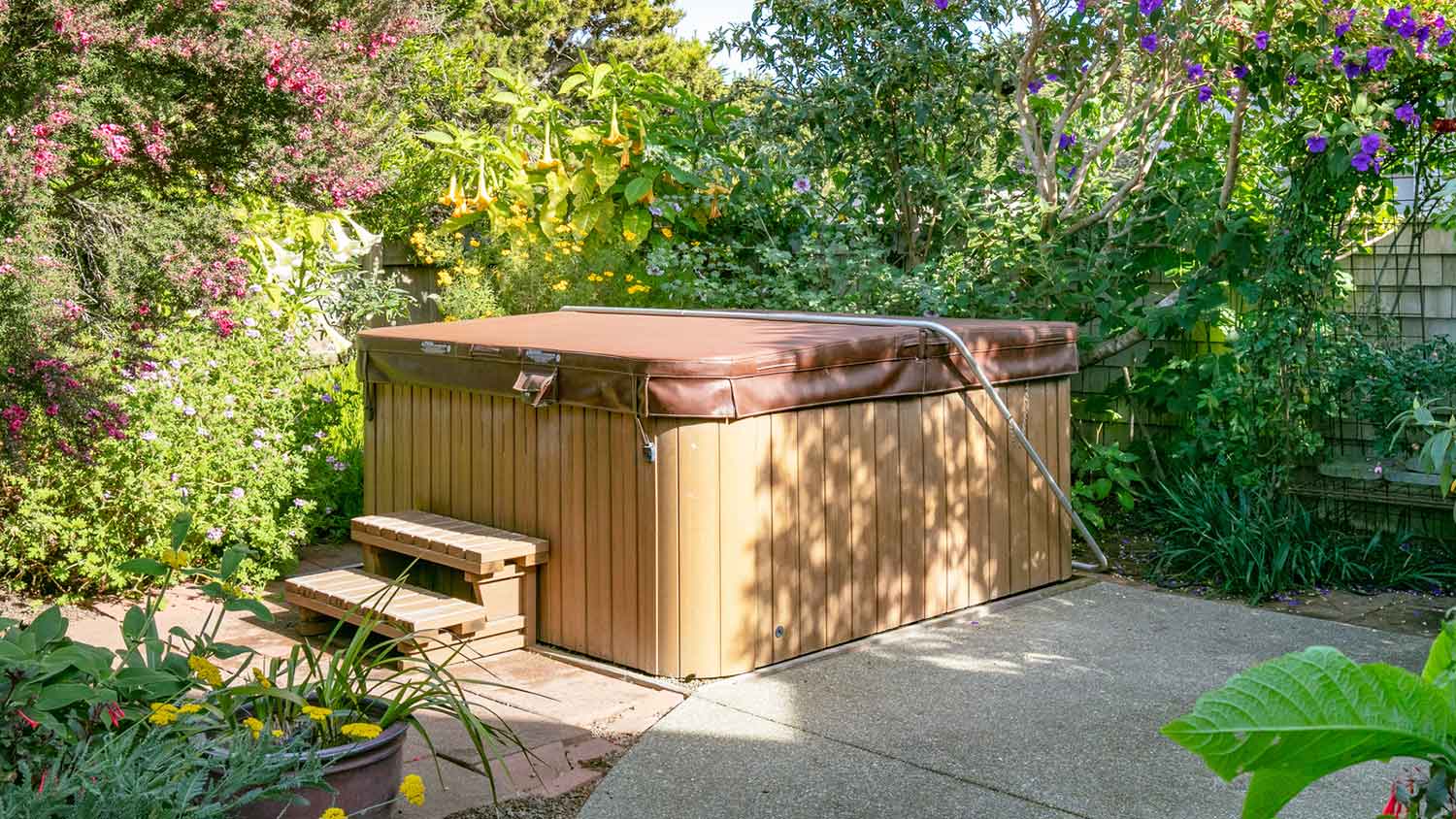8 Must-Know Tips for Installing an Indoor Hot Tub
You should consider everything from walls to flooring before installing an indoor hot tub


There’s nothing better than relaxing in a hot tub after a long day. But before you install one in your home, you’ll want to consider everything, from the walls to the flooring. These eight tips will break down what you need to know to have an indoor hot tub installed in your home.
1. Find the Right Indoor Hot Tub Professional for the Job
Installing an indoor hot tub is not a job you can handle on your own. In fact, it’s a job that requires a professional because of the weight of the tub, the wiring, and all of that water. You want a pro to install it properly so you don’t have to pay for the cost to fix a hot tub down the road.
Quick Tips for Hiring Hot Tub Installation Professionals
While it may seem costly upfront, hiring a professional hot tub installer may be worth it. These pros coordinate electrical work, renovations, excavation, and other necessary tasks to get the job done. When hiring a hot tub installer, ask them the following questions:
Will you obtain the permits required for the job?
Do you have a licensed electrician on your team to install the electrical supply?
Are you familiar with the zoning and building codes in this area?
Where would you place this hot tub, and how would you account for drainage?
Make sure you get at least three quotes from local hot tub installation professionals in your area. The average cost of having a hot tub installed is $3,400.
2. Install the Proper Flooring
The floor in the room where you install your indoor hot tub will be splashed with water often—it’s unavoidable. In fact, every time a person climbs out of a hot tub, they can bring as much as an entire gallon of water with them.
That’s why you need to make sure the type of flooring is strong enough to hold all that weight. Do not use wood flooring, which can warp and rot, and definitely do not use carpeting, which can hold onto water and rot as well.
Indoor hot tub tip: Go for ceramic tiling with an anti-slip or matte finish instead that won’t rot, can support weight, and will keep wet feet from slipping.
3. Check Drainage and Water Supply
Even the best-laid ceramic tile floor can make water disappear. That’s why it’s critical you have at least one drain in your floor in the room where your indoor hot tub is installed. Opting for multiple drains is even smarter, and can make those times you have to empty the tub a breeze.
As essential as good drainage is, so is access to a water supply. If there is no way to fill your tub, you can’t enjoy it. If you don’t have the plumbing already installed for your hot tub, contact a plumbing professional in your area for a quote on your project.
Before installing an indoor hot tub, take some precautions to protect your home from costly water damage. Buying a hot tub with proper drainage, using a vapor barrier around wall studs, and installing a floor drain are all recommended steps.
4. Look for Access Areas
A room may technically be big enough to hold a hot tub, but you need to consider how much space you’ll need overall.
Below are two tips for ensuring your indoor hot tub is accessible to all:
Service access: If you need to have your hot tub serviced for any reason, contractors will need to have enough room to work.
User access: Make it easy for people enjoying your hot tub to get in and out safely.
5. Prepare the Room for Moisture

When the spa cover comes off, your room becomes a steamy environment—and the walls need to be built accordingly. Try glass, cedar, or concrete walls. Cedar is less prone to rot, and glass is easy to maintain. Consult with a professional about additional treatments you can give the walls to prevent mold or sagging.
Greenboard, a type of water-resistant drywall, is another popular choice for indoor hot tubs since it’s designed to withstand humid environments. Greenboard costs between $14 and $18 a panel.
Indoor hot tub tip: Installing a vapor barrier is another critical step in prepping a room for moisture. A vapor barrier is a form of damp proofing that protects your wall studs from dry rot.
6. Install Fans
The combination of heat and water can make for a steamy and very hot indoor hot tub room. While that’s nice in small doses, you’ll also want to regulate the room with fans.
Here are a few tips on keeping your indoor hot tub room comfortable:
Exhaust Fans
Exhaust fans are a wise choice for homeowners on the market for a hot tub. These fans pull out the steam and water from the room and help prevent mold or water damage.
When shopping for exhaust fans, look for models that are relatively quiet and rust-resistant. Make sure the exhaust fan contains a timer and a thermostat so you can check the room’s humidity levels.
Ceiling Fans
While it sounds odd, cooling down the room with a ceiling fan is a smart way to quickly lower the room’s temperature after the tub has been used. Ceiling fans also circulate the air, which keeps people using the hot tub comfortable during use.
7. Consider Your Chemicals

When you think of an indoor hot tub, you’re probably not thinking about chemicals. But it’s smart to invest in chlorine-free hot tub solutions to avoid that telltale “pool smell.”
When treating indoor hot tubs, two chemicals are primarily responsible for that odor. Those chemicals are chlorine and bromine. It’s important to keep your hot tub clean and sanitized, but you can also do that without those chemicals in the mix.
Check out the following tips for using indoor hot tub sanitizer alternatives:
Alternative Indoor Hot Tub Sanitizers
Biguanides, or polyhexamethylene biguanide (PHMP), is an effective microbe killer that doesn’t break down quickly in high temperatures.
Salt water generators contain their own salt cells that, in turn, create their own natural chlorine that doesn’t produce the same smell as chemically produced chlorine.
Ozonators use oxygen and UV light to create a bacteria-killing gas inside your hot tub. The only catch is they still require some chlorine and bromine, though in smaller amounts.
8. Consult a Professional Hot Tub Company About Maintenance
Now that you have your indoor hot tub installed, you’ll want to make sure you keep up with hot tub maintenance. After all, this is a big investment for your home and you’ll want to make sure it lasts for years to come.
Find a local hot tub company to perform preventative maintenance, cleanings, and any repairs needed, so you can enjoy your hot tub stress-free.





- Can You Put a Hot Tub in Your Basement?
- How Long Does a Hot Tub Last?
- Replacing vs. Refurbishing a Hot Tub: What You Should Know
- 7 Types of Hot Tubs to Add to Your Home or Backyard
- 13 Hot Tub Maintenance Tips to Maximize Relaxation Time
- 24 Hot Tub Deck Ideas for a Backyard Paradise
- How to Clean a Hot Tub Filter Properly
- What’s the Ideal Hot Tub Temperature for You?
- How Does a Hot Tub Work Its Magic?
- The Ins and Outs of Hot Tub Electrical Requirements











